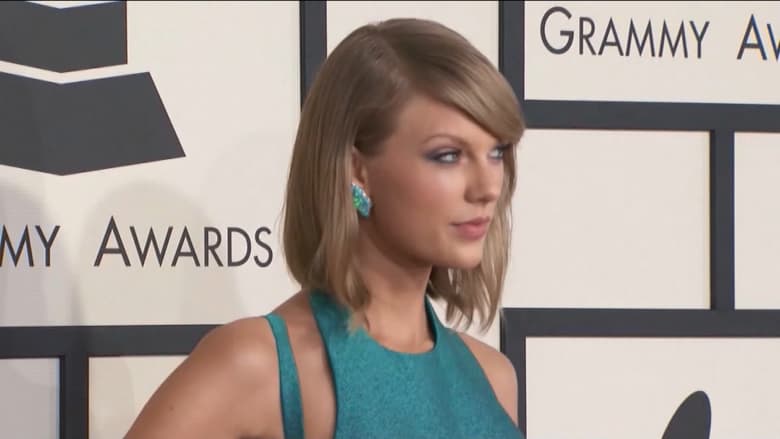دبي، الإمارات العربية المتحدة (CNN) -- يتوق يعض الأشخاص إلى الأغاني الشهيرة عالميا، التي أنتجت خلال الفترة بين عامي 2008 و2016، بينما يجد آخرون أن الموسيقى كانت أفضل عندما كانوا أصغر سنًا، ولكن ما السبب؟
تحدثت CNN إلى بعض الخبراء حول كيفية تأثير الموسيقى على أدمغتنا لمعرفة الإجابة.
وأوضحت الدكتورة ريتا أييلو، وهي عالمة النفس الموسيقية لدى جامعة نيويورك التي تدرس كيف يتعامل الناس مع الموسيقى، وكيف تشكل الموسيقى والذكريات بعضها البعض أن "الأمر لا يتعلق بأن الموسيقى كانت أفضل عندما كنا أصغر سنًا؛ بل أن الموسيقى تثير مشاعر قوية للغاية".
وتتذكر أييلو أغنية "Yesterday" لفرقة البيتلز البريطانية كواحدة من الأغاني المفضلة لديها في شبابها.
وقالت: "تُعد الموسيقى أداة قوية لاسترجاع الذكريات في حياتنا".

ولكن، لماذا تتمتع الموسيقى بهذه القوة؟ يشرح الدكتور روبرت كوتييتا، وهو أستاذ الموسيقى لدى جامعة جنوب كاليفورنيا أن "الموسيقى عرضية. وإذا نظرت إلى عمل فني ما، يمكنك النظر إليه ثم مغادرة المكان. أما الموسيقى فهي مرتبطة بوقت معين. وهناك جزء من دماغنا يُسمى الذاكرة العرضية، التي تخزّن الموسيقى".
وهذه الذاكرة تسمح للفرد أن يعود مجازيًا بالوقت المناسب لتذكر الأحداث التي وقعت في وقت ومكان محددين.
وبحسب دراسة أجريت في عام 1989، ونُشرت في الدورية الأكادمية "Journal of Consumer Research"، فإن تفضيل الشخص للموسيقى الشائعة يبلغ ذروته في سن الـ23 عامًا، بينما تفيد دراسة أجريت في عام 2013 بالدورية الأكاديمية "Musicae Scientiae" بأن تفضيل الشخص للموسيقى الشائعة يبلغ ذروته في سن الـ19 عامًا.
ووجدت نسخة طبق الأصل من الدراسة الأخيرة في عام 2022 أن تفضيل الشخص للموسيقى يبلغ ذروته في سن الـ17 عامًا.
وقال كوتييتا إنها "جزء من هويتك. فخلال تلك السنوات، تُطور الكثير مما أنت عليه، وتتعلق بالموسيقى".
واستشهد كوتييتا، الذي ولد في عام 1953، بأعمال فرقة البيتلز كأغاني مفضلة لديه، حيث وجد أن هذه الفرقة ساعدت في تشكيل ذوقه الموسيقي كمراهق.
وقد يكون هذا التعلّق بهويتك سببا لشعورك بارتباط أقل بالموسيقى المعاصرة مع تقدمك في العمر.
وتساعد العواطف المرتبطة بالموسيقى خلال مراحل مؤثرة من حياتنا في تكوين رابط مدى الحياة، حيث تتداخل مشاعر السعادة والحزن، بل تكمل بعضها البعض، عند الاستماع إلى الأغنية.
وأوضح أييلو: "إذا شعرت بالحزن (أثناء الاستماع إلى أغنية ما) قبل 20 عامًا، فسنشعر بالحزن إذا استمعت إليها اليوم، ولكن مع حزن أقل... لذلك هناك شعور مختلف بالإثراء في التجربة".
وأضافت أن هذا قد يفسر أيضًا سبب الشعور بالتنفيس الوجداني عند الاستماع إلى أغنية استمتعت بها خلال فترة صعبة سابقة في حياتك.
لكن، ماذا لو كنت تعتقد أن فترة السبعينيات والثمانينيات كانت أفضل حقبة للموسيقى الحقيقية، رغم أن جميع العقود تحتوي على أغاني جيدة وسيئة؟
قد يتمثل السبب بأنك تتذكر الفنانين، والأغاني، والألبومات التي كانت ذات مغزى بالنسبة لك، وتنسى تلك التي لم تكن كذلك.
وأشارت أييلو إلى أن "هناك ظروف جعلت بعض الأغاني ذات مغزى خاص بالنسبة لك، وستسترجع ذكريات تلك الظروف عندما تستمع إلى تلك الأغاني".
من جهته، لفت كوتيتا إلى أن تلك الأغاني ذات المغزى لا تزال تتردّد في ذهنك، وتطغى على الأغاني التي يسهل نسيانها، موضحًا: "كل عصر لديه أغاني سيئة أصبحت ناجحة للغاية. والتي لا تزال مخزنة في مكان ما في ذاكرتنا، لكننا نختار عدم تذكرها. بطبيعة الحال، سنستذكر الأغاني التي نحبها".
وبالمثل، من المرجح أن شباب اليوم سيشيدون بفترة عشرينيات القرن الحادي والعشرين باعتبارها فترة رائعة للموسيقى، وقد يجدون أن الفنانين في عام 2038 لا يمكن مقارنتهم بفناني جيلهم.



